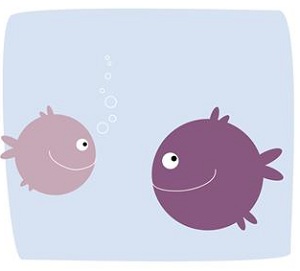Finding ‘Nemo’

Nemo is reacting in an age-appropriate way: He wants to show his dad what he can do; Dad won’t let him, and then Nemo does it anyway. Sound familiar? This pattern happens a lot and at different ages and stages with parents and kids. As the kids get older, we may become more comfortable with letting go, but it will still be hard.
The question is this: How do we allow our children to do more things on their own when our own fears get in the way?
At a young age, kids begin to pull away and search for independence, and as parents, we encourage that, support them, and cheer them on. When they stumble, we help pick them up and tell them to try again. When they succeed, we feel great! When they “fail,” we get discouraged and/or keep cheering them on. The latter is a healthier response: to keep cheering for and encouraging them and to allow kids to keep striving.
The challenge is when they are hurt or held back by a physical or mental challenge that as parents we want to protect them from. We may also want to protect them because of our own fears or beliefs that someone is going to hurt them even more. When a child is showing the desire to try again or to show you that he can do something, that is when it can be okay to allow it.
With Nemo, he wanted to show his father he could swim far (out to the boat) and come back. Yes, he was being oppositional and was not listening or following directions, but that is not really the point.
Marlin was afraid that Nemo would not be able to swim to the boat, and from my perspective, Marlin was afraid that he would have to go get Nemo, and Marlin was more afraid of that than anything else. So here is something to think about: we need to be aware of where our fears come from as parents. Do our fears arise from our own insecurities or doubts that we will not be able to swim to the boat? Or maybe the fear is that when our child does well, he will need us less.
Wherever Marlin’s fears were coming from, Nemo did what he believed he could do. Yes, he got caught, and his dad searched and found him; and then Nemo was able to show Dad that in spite of his short fin, he was still able to do great things. Maybe if Marlin had allowed Nemo to show him earlier, then the situation would not have had to go that far, but then the movie would not have been made.
It took Dori to point out to Marlin that maybe it was time for him to let go. Yes, they were in the whale, but Marlin got the message: Allow Nemo to show what he can do, even if Marlin has some fears.
But let’s look again at the question posed earlier: When is it okay to allow your child to have more freedom? How can parents manage their fears when a child is insisting on what he can do?
- Identify your fears. Be aware of them. When we look at our fears, we can do something about them. Are the fears more about your child or that you may not be able to protect him from getting hurt? You are not always going to be able to protect your child; he may get hurt, but he probably will also be okay.
- Focus on what your child is able to do. Look at where improvements have been made, and see how you can help encourage him. Look at how you can support him to try something new or a little more challenging.
- Is your child asking to try something new? Is he wanting to try more? If he is, then believe in him, and try to understand that he believes he is able to try it. You can share with him your thoughts and concerns. He may disagree and still want to try, and if so, then trust him. Yes, he may not fully succeed, and that’s okay. He will learn more about himself and become more confident in himself. When he does succeed, it will feel wonderful and he will be very proud to show you.
- If you have conveyed your thoughts/fears to your child and he’s still insistent that he can do whatever it is, then support him. Encourage him and be there for him.
- If he “fails”, do NOT say, “I TOLD YOU SO” because that would be your fears talking. Encourage him to try again; failure means not trying at all.
Back to Marlin and Nemo: Marlin learned that Nemo was able to do a lot of things, even with a short fin. He succeeded, and Marlin also succeeded: He learned that letting go is not only scary at times but also very rewarding. Nemo told him that he loved him and was thankful, and the letting go helped their relationship become more fun. Marlin also became better at telling jokes!
One last thought: When Marlin allowed Nemo to show what he could do, I think Marlin found his own “Nemo,” which I guess opens the door for another article on this topic: Finding “Nemo” Part II.
Related articles:
Increasing Children’s Self-Esteem
Importance of Coping Skills, Part 2: Building Resilience
When Not to Say “No” to Your Child
The preceding article was solely written by the author named above. Any views and opinions expressed are not necessarily shared by GoodTherapy.org.